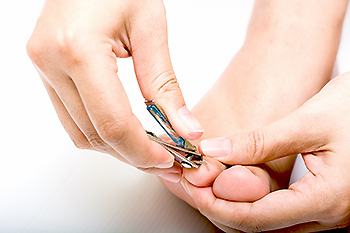- Home
- Our Doctors
- Our Offices
- New Patients
- Patient Education
- Blog
- Contact Us
- Patient Portal Help
- Product Center
 Ingrown toenails can be painful and difficult to manage. The best thing that you can do to avoid ingrown toenails is to trim the nails correctly. When trimming the nails, use toenail clippers to trim the nails straight across. Avoid cutting them into a rounded shape, as rounded corners are more likely to grow out and dig into the skin, becoming ingrown. You should cut your toenails so that the corners lie loosely against the skin. Cutting the nails too short increases the risk of them becoming ingrown. If you become afflicted with an ingrown toenail, don’t try to remove it yourself, see a podiatrist who can remove it safely and effectively.
Ingrown toenails can be painful and difficult to manage. The best thing that you can do to avoid ingrown toenails is to trim the nails correctly. When trimming the nails, use toenail clippers to trim the nails straight across. Avoid cutting them into a rounded shape, as rounded corners are more likely to grow out and dig into the skin, becoming ingrown. You should cut your toenails so that the corners lie loosely against the skin. Cutting the nails too short increases the risk of them becoming ingrown. If you become afflicted with an ingrown toenail, don’t try to remove it yourself, see a podiatrist who can remove it safely and effectively.
Ingrown toenails may initially present themselves as a minor discomfort, but they may progress into an infection in the skin without proper treatment. For more information about ingrown toenails, contact one of our podiatrists of Foot & Ankle Institue. Our doctors can provide the care you need to keep you pain-free and on your feet.
Ingrown Toenails
Ingrown toenails are caused when the corner or side of a toenail grows into the soft flesh surrounding it. They often result in redness, swelling, pain, and in some cases, infection. This condition typically affects the big toe and may recur if it is not treated properly.
Causes
You are more likely to develop an ingrown toenail if you are obese, have diabetes, arthritis, or have any fungal infection in your nails. Additionally, people who have foot or toe deformities are at a higher risk of developing an ingrown toenail.
Symptoms
Some symptoms of ingrown toenails are redness, swelling, and pain. In rare cases, there may be a yellowish drainage coming from the nail.
Treatment
Ignoring an ingrown toenail can have serious complications. Infections of the nail border can progress to a deeper soft-tissue infection, which can then turn into a bone infection. You should always speak with your podiatrist if you suspect you have an ingrown toenail, especially if you have diabetes or poor circulation.
If you have any questions, please feel free to contact one of our offices located in St. George, Hurricane, and Cedar City, UT and Mesquite, NV . We offer the newest diagnostic and treatment technologies for all your foot care needs.
Having issues or need help with your portal?
Click here for Instructional Videos